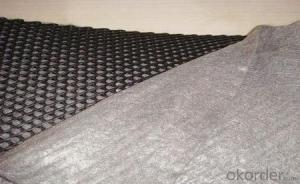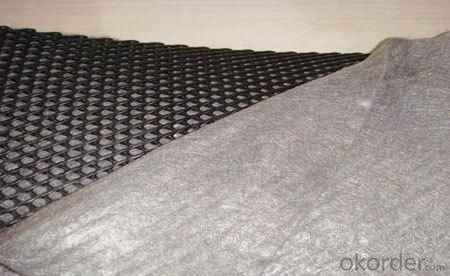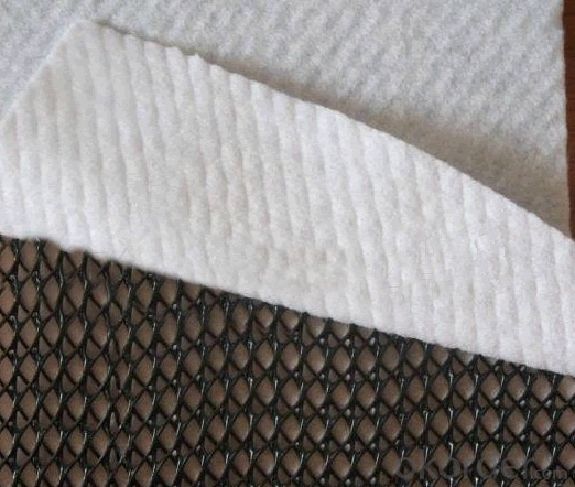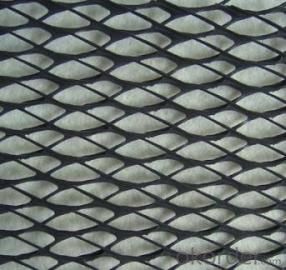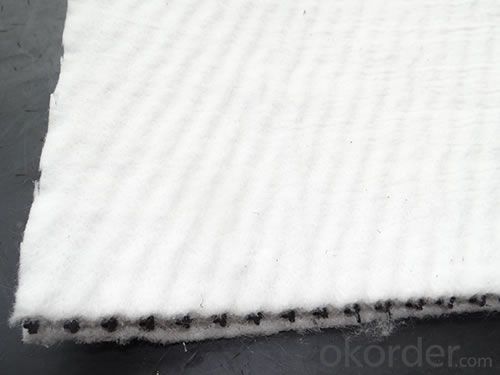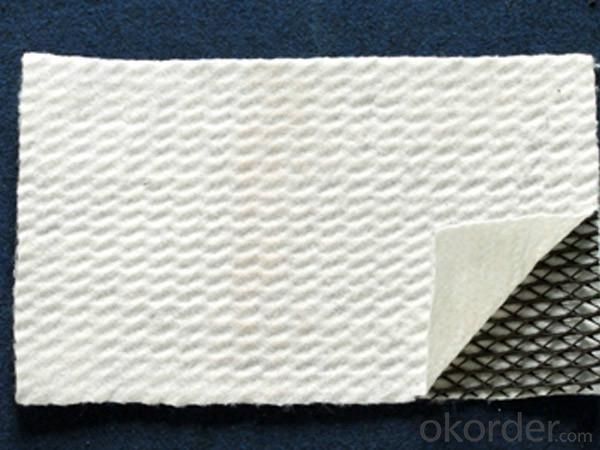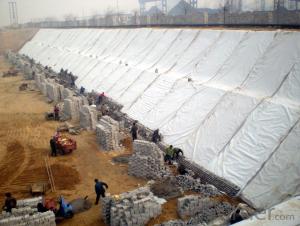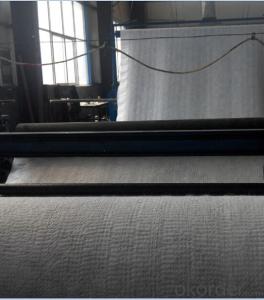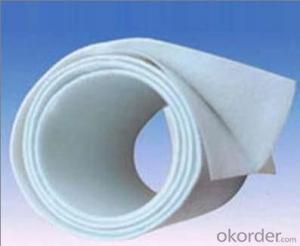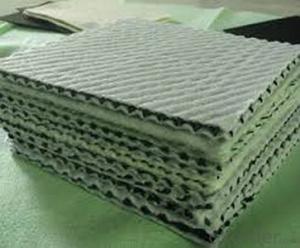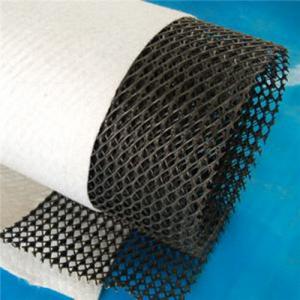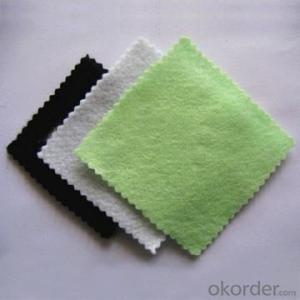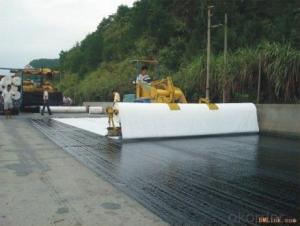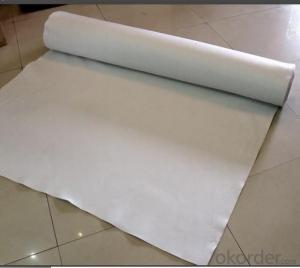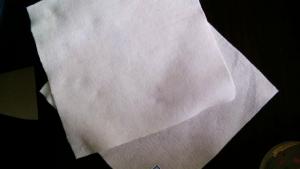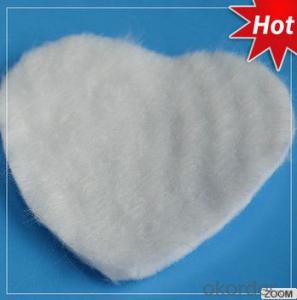Non Woven Polypropylene Geotextile Fabric HDPE Three-Dimensional Composite Geonet and Drainage Network
- Loading Port:
- Qingdao
- Payment Terms:
- TT OR LC
- Min Order Qty:
- 10000 pc
- Supply Capability:
- 500000 pc/month
OKorder Service Pledge
OKorder Financial Service
You Might Also Like
Description Of HDPE Three-dimensional Composite Geonet and Drainage Network
Doublesided adhesive geotextile compound using, with "filter - drainage - air - protection" comprehensive performance.
It’s the most ideal material of drainage now.
They can replace the traditional sand and gravel layer, Mainly used in drainage of landfills, roadbed and tunnel lining.
Widely used in landfill site drainage, highway roadbed and road surface drainage, railway system water drainage, tunnel drainage, underground structure drainage, retaining wall back drainage, garden and stadium drainage, etc.
Main Features of HDPE Three-dimensional Composite Geonet and Drainage Network
1. Drainage is strong.
2. Widely used in landfill site drainage, highway roadbed and road surface drainage
3. To reduce the probability of geotextiles embedded into core, maintain long-term stability of the drainage.
4. Long-term load is under great pressure.
5. Corrosion resistance, acid and alkali resistance, long service life.
6. special extrusion process forming special structure with three layers
Specifications of HDPE Three-dimensional Composite Geonet and Drainage Network
Item | CE121 | CE131 | CE151 | DN1 | HF10 |
Unit weight/g/sqm | 750±35 | 630±30 | 550±25 | 750±35 | 1240±60 |
Thickness/mm | - | - | - | ≥6.0 | ≥5.0 |
Mesh size/mm | (8±1)×(6±1) | (27±2)×(27±2) | (74±5)×(74±5) | (10±1)×(10±1) | (10±1)×(6±1) |
Width variation/m | +0.06 | ||||
Length Variation/m | +1 | ||||
Tensile Strength :
Items | CE121 | CE131 | CE151 | DN1 | HF10 |
Tesile strength (KN/m) | Vertical& horizontal≥6.2 | Vertical& horizontal≥5.8 | Vertical& horizontal≥5.0 | Vertical& horizontal≥6.0 | Vertical& horizontal≥18 |
HDPE Three-dimensional Composite Geonet and Drainage Network Images
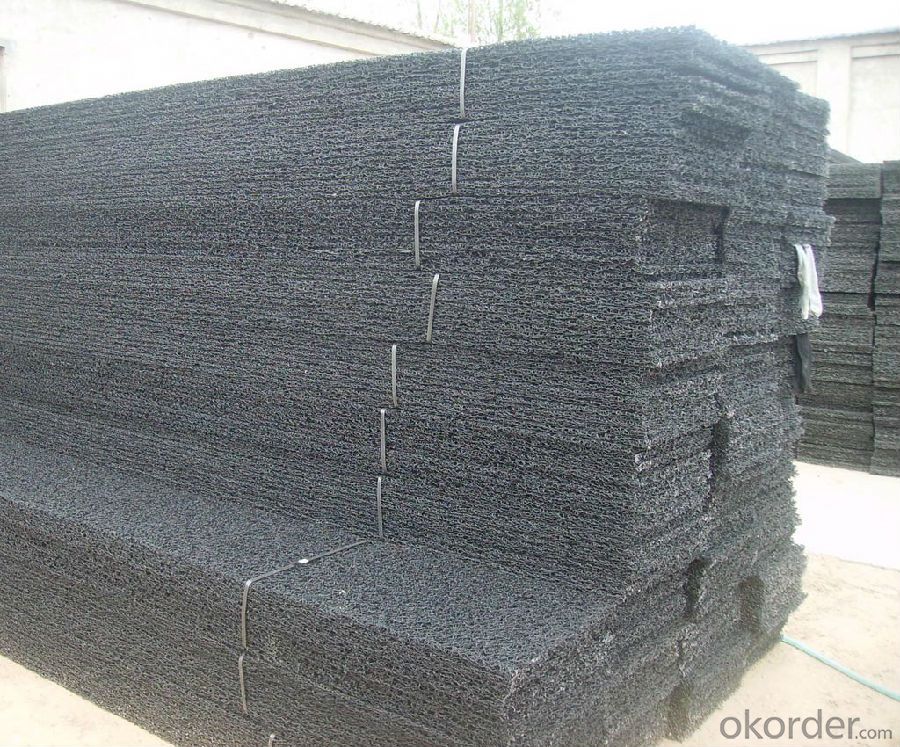
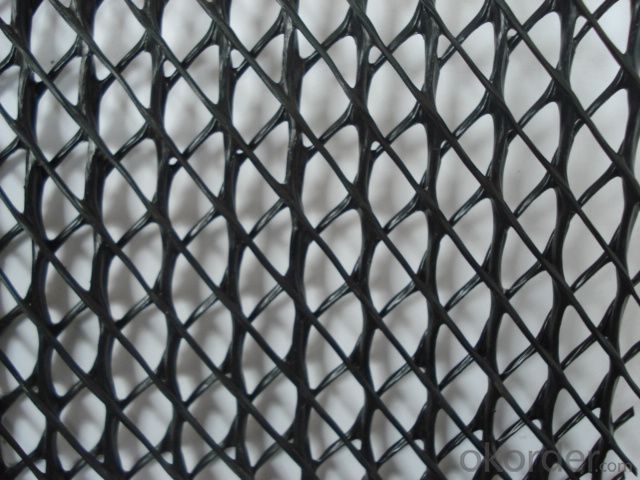
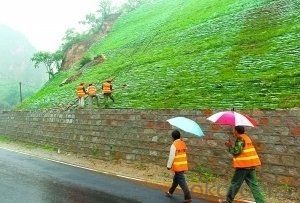
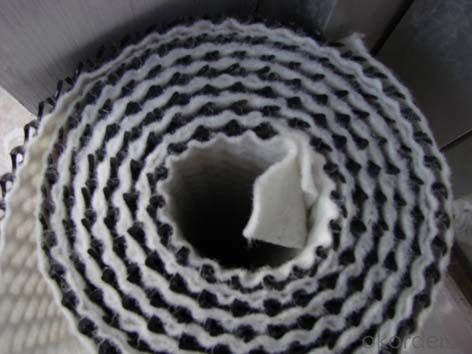
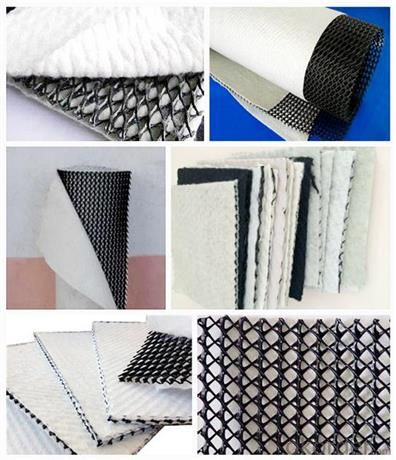
FAQ
1. Do you supply free samples for customers?
Yes,we will supply free samples for you.Please send your address for us.
2. How Many years experience do you have?
We have been exported to more than 20 countries in the past 15 years.
3. How long do we usually reply your request?
We always reply our customer within 24 hours.
- Q: How do geotextiles help with filtration in stormwater management?
- Geotextiles are used in stormwater management to help with filtration by acting as a barrier that prevents the passage of fine particles while allowing water to pass through. This helps to remove pollutants and sediments from stormwater runoff, improving water quality before it enters natural water bodies or is discharged into the environment.
- Q: How do geotextiles help with weed control in landscaping projects?
- Geotextiles aid in weed control in landscaping projects by acting as a barrier between the soil and the weed seeds. These permeable fabrics allow water and air to pass through, ensuring proper drainage and maintaining soil health, while preventing weed growth by blocking sunlight and impeding weed seed germination.
- Q: Where is the geotextile in the municipal works?
- Conservation, consideration, there is more green and more Chinese geotextile material manufacturers
- Q: How are geotextiles made?
- Geotextiles are made by weaving or knitting synthetic fibers together to create a strong, durable fabric that can be used for various geotechnical applications.
- Q: Now geotextile price quota how?
- 2017 geotextile price cheaper than last year, the current price of raw materials is relatively stable production. Geotextile classification of many, you ask more general, so no way to give you a detailed offer. Different technical requirements are uneven prices, but the overall price has come down, and is now the lowest price since 2017.
- Q: What are the advantages of using geotextiles in hydraulic applications?
- There are several advantages of using geotextiles in hydraulic applications. Firstly, geotextiles help in the filtration and separation of soil particles, preventing clogging and maintaining the flow of water. Secondly, they provide reinforcement and stability to soil, enhancing its load-bearing capacity and preventing erosion. Additionally, geotextiles act as a barrier, preventing the migration of fine particles and pollutants, thus improving water quality. Lastly, they are cost-effective and easy to install, making them a practical choice for various hydraulic projects.
- Q: What is the standard width of geotextile?
- 1, geotextile no standard width requirements. The geotextile width is now between 2 and 8 meters. 2, geotextile, also known as geotextile, it is made of synthetic fibers through the needle or woven from the permeability of geosynthetics. Geotextile is a new material geosynthetics which one, the finished product for the cloth, the general width of 4-6 meters, the length of 50-100 meters. Geotextile is divided into a woven geotextile and non-woven geotextile.
- Q: Can geotextiles be used in underground storage tank installations?
- Yes, geotextiles can be used in underground storage tank installations. Geotextiles are often used as a protective barrier between the tank and the surrounding soil to prevent contamination and provide stability.
- Q: Can geotextiles be used in the construction of sports fields?
- Yes, geotextiles can be used in the construction of sports fields. Geotextiles are often used as a barrier between the soil and the playing surface to prevent weed growth, stabilize the soil, and improve drainage. They can also enhance the durability and longevity of the sports field by preventing soil erosion and reducing the risk of subsidence.
- Q: What does geotextile mean?
- Geotextile, also known as geotextile, it is made of synthetic fiber through acupuncture or woven from the permeability of geosynthetics. Geotextile is a new material geosynthetics which one, the finished product for the cloth, the general width of 4-6 meters, the length of 50-100 meters. Geotextile is divided into a spinning geotextile and non-woven filament geotextile. First, the characteristics: 1, high strength, due to the use of plastic fibers, in dry and wet state can maintain full strength and elongation. 2, corrosion-resistant, in different pH of the soil and water can be long-term corrosion resistance. 3, good water permeability between the fiber gap, it has a good water permeability. 4, good microbial resistance to micro-organisms, insects are not damaged. 5, construction convenience, as the material light, soft, so the delivery, laying, construction convenience. 6, complete specifications: width of up to 9 meters. Is currently the widest product, the unit area quality: 100-1000g / ㎡. Second, the role: 1, isolation 2, filtration 3, drainage 4, reinforced 5, protection 6, anti-puncture
Send your message to us
Non Woven Polypropylene Geotextile Fabric HDPE Three-Dimensional Composite Geonet and Drainage Network
- Loading Port:
- Qingdao
- Payment Terms:
- TT OR LC
- Min Order Qty:
- 10000 pc
- Supply Capability:
- 500000 pc/month
OKorder Service Pledge
OKorder Financial Service
Similar products
Hot products
Hot Searches
Related keywords
